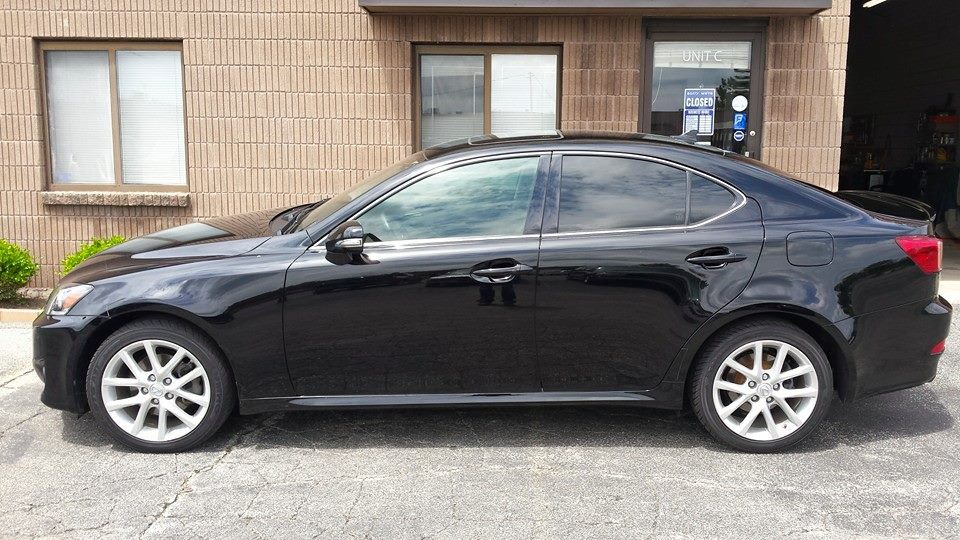

The state of Ohio does not make medical exemptions for vehicles registered within the state.

Do Ohio Tint Laws Recognize Medical Exemptions? The rear window can also be tinted to preserve your vehicle’s interior and prevent premature cracking and fading. This also plays a significant role in preventing heat and sunlight into the vehicle, keeping it cool in warm weather. Rear WindowĪny tint percentage is allowed for the rear window. There are no limits on tint percentages because of little communication between rear-seat passengers and other drivers.
#Ohio windshield tint law windows
The back seat side windows may have any percentage of tint.
#Ohio windshield tint law driver
This 50% tint is dark enough to keep the sun out but light enough that the driver and front passenger are still visible to others. People often do this to keep the sunlight out of the car, which keeps it cool or helps with better visibility. Front Side WindowsĪccording to Ohio tint laws, the front side windows on your vehicle may have up to 50% tint. This means that window tint cannot cover the entire windshield. Having a clear view out of the windshield is critical to both your safety and the safety of others. The front windshield tint can only be present on the top 5 inches of the windshield, and it must be non-reflective. Luckily, for the state of Ohio, these two categories have the same tinting limits. Window tinting rules and regulations for passenger vehicles could be different from those of multi-purpose vehicles. It’s also essential to be aware that most states differentiate between the type of vehicle. These laws began in 2004 and continue to be practiced throughout the state today. In Ohio, tint law varies depending on the glass’s location, whether front, side, or rear. Clair, St.Final Thoughts What Are The Ohio Tint Laws?īecause each state has its legislation surrounding window tint on your vehicle, it is essential to be aware of the tint laws in your respective state of residence. While sparsely populated, the Upper Peninsula is economically important due to its status as a tourist destination as well as its abundance of natural resources.Ĭities in Michigan: Detroit, Grand Rapids, Lansing, Ann Arbor, Kalamazoo, Flint, Dearborn, Troy, Muskegon, Holland, Bay City, Novi, Livonia, Royal Oak, Sterling Heights, Farmington Hills, Traverse City, Southfield, Battle Creek, Saginaw, Warren, Pontiac, Auburn Hills, Ypsilanti, Frankenmuth, East Lansing, Midland, Rochester Hills, Marquette, Petoskey, Westland, Bloomfield Hills, Grand Haven, Port Huron, Benton Harbor, Jackson, Birmingham, Saugatuck, New Era, Plymouth, South Haven, Ferndale, Northville, Madison Heights, Wyoming, Rochester, Iron Mountain, Hell, Roseville, TaylorĬounties in Michigan: Alcona, Alger, Allegan, Alpena, Antrim, Arenac, Baraga, Barry, Bay, Benzie, Berrien, Branch, Calhoun, Cass, Charlevoix, Cheboygan, Chippewa, Clare, Clinton, Crawford, Delta, Dickinson, Eaton, Emmet, Genesee, Gladwin, Gogebic, Grand Traverse, Gratiot, Hillsdale, Houghton, Huron, Ingham, Ionia, Iosco, Iron, Isabella, Jackson, Kalamazoo, Kalkaska, Kent, Keweenaw, Lake, Lapeer, Leelanau, Lenawee, Livingston, Luce, Mackinac, Macomb, Manistee, Marquette, Mason, Mecosta, Menominee, Midland, Missaukee, Monroe, Montcalm, Montmorency, Muskegon, Newaygo, Oakland, Oceana, Ogemaw, Ontonagon, Osceola, Oscoda, Otsego, Ottawa, Presque Isle, Roscommon, Saginaw, St. Michigan is the only state to consist of two peninsulas, connected by the Mackinac Bridge. Tint is not allowed on any other part of these windows.

Michigan permits tinting front windshield and front windows (those adjacent to driver) but only top 4 inches of these windows. Back Side windows: Any darkness can be used.Front Side windows: Any darkness can be applied but only on top 4 inches.Windshield: Non-reflective tint is allowed on the top 4 inches of the windshield.The percentage of light allowed through your film and glass in Michigan is very specific and different for sedan cars and SUV cars or vans. The percent of visible light allowed through your car windows is called VLT: Visible Light Transmission. There are also additional car window tinting rules and regulations in Michigan so make sure you read all about it below. We have provided all the necessary information about your car’s window tint, including how dark or reflective the tint is allowed in your state. Car window tinting laws in Michigan were enacted in 2000.


 0 kommentar(er)
0 kommentar(er)
